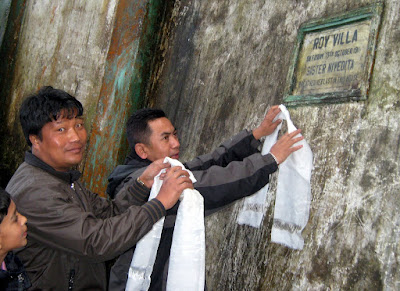Proposed by Association for Conservation and Tourism (ACT), an NGO engaged in community empowerment using tourism as a tool and conservation as a religion...
The Macmillan Dictionary describes homestay as (noun) a visit in which you pay to stay in someone’s house rather than in a hotel, hence however and whatever we want to elaborate, the meaning is sharing the house with the host. We must also understand that the kitchen under such circumstances is common and the same food is usually being cooked for the host family is shared. In the past, visitors considered this where there were no hotels or lodges in remote areas or in cities where hotels were packed and there used to be a high demand for accommodation.
The Homestay concept has undergone a great change. Today visitors seeking for Homestay bookings look forward to authentic local experiences. Hence, the qualities of homestays are also diverse infrastructure wise, but all of them confirm strong local experience. Even where there are hotels, resorts and lodges, a homestay with 01 or 02 rooms are always in demand for a particular category of tourists who look forward to the feel of the place and the people.

‘Homestay Lodge’ is a little beyond the Homestays, where the host due to continuous pressure of tourists, looks forward to the privacy for the family and hence because of need creates an infrastructure adjoining to the residence, managed and run by the family from home. The kitchen and dining here is dedicated for the visitors only but joined by the host. The number of rooms are usually between 03 to 06, but sometimes extends to 08. Though the size is that of a lodge, but being run by the adjoining home, the authentic local encounters are still retained.
The Homestays are easy to maintain, uses mostly local resources and are not affected to a big extend for bad seasons as the overheads are extremely low. This is also a pride for the host, as he can host his own family guests with a good standard. The Homestay also helps to upgrade the hygiene and living standard of the host family, giving better opportunities to the younger generation towards global exposure. The appreciation of the visitors for the local natural and cultural phenomenon gives a sense of pride to the host community.
The Homestay movement helps the remote host communities to come out of isolation, thereby helping to understand and respect cultural differences, helping a generation to think locally and link globally. The resource exchange between the visitor and the host is more rooted and helps in creating a global community seeing eye to eye with each other.
A proposed policy for Homestays in North Bengal:
The word Homestay is often misused in tourism circles, mainly in registration and promotion. Hence, there is an immediate need to create a definition for homestays and provide a legal framework to recognize them under the central or state Governments. The major need is at nature based destinations, among people living in and around nature reserves and need to be involved in the conservation process. The proposals are as follows:
1) The aim of the homestays in and around the natural heritage centres would be (a) improve the overall quality of village people’s life, (b) preserve and reinforce the importance of local cultures, (c) empower villagers to make their own decisions about their way of life and (d) contribute to the conservation of natural resources and the environment.
2) Each of the homestay clusters are to be supported by a rural tourism resource centre which will help in capacity building of the homestay entrepreneurs, ecoguides and other ecotourism service providers, the monitoring will also be coordinated from these centres and research in creating better experiences locally.
The resource centre will also monitor to issues like hygiene and child labour or any other activity related to cause a negative impact on the local society.
3) The homestays to have a maximum of 01 to 03 rooms with shared or attached toilets, dining and kitchen is common with the host and the family manages and serves the visitors or paying guests at home.
4) The Homestay Lodge should be restricted to a structure adjoining or in continuity to the home. The management to be restricted to the family only. The number of rooms should be between 04 to 10 with exclusive dining and kitchen for the visitors or paying guests.
5) There should be subsidy if available of any kind, to be confined for the initiation of Homestays only. The Homestay Lodge to only receive recognization from the Government, but will be eligible for subsidy at par with any private enterprise related to small hotel.
6) The Homestay or Homestay Lodge cluster must have a solid waste management system to be introduced by the resource centre.
7) Similarly, the cooking fuel must be restricted to alternative fuels like Gobar (Cow Dung) Gas plant or Bio-Gas plant or at the best to LPG or Kerosene.




















